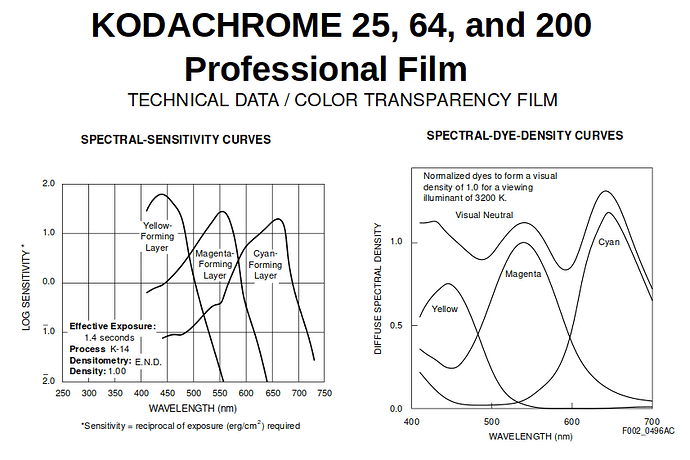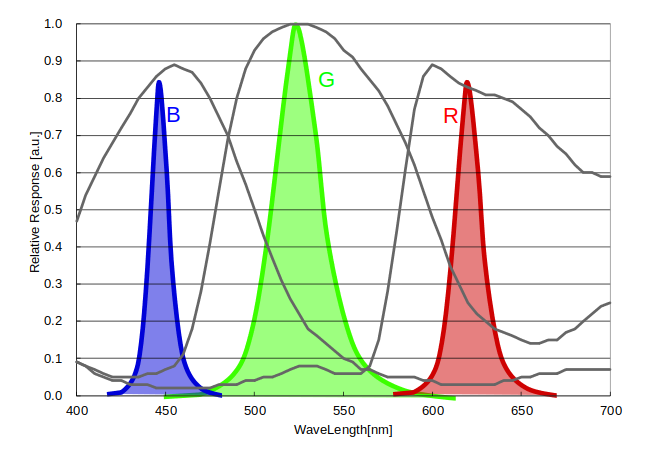There is more to it, as @cpixip already pointed out. The image is the leftover that the dyes didn’t eat.
The disagreement is what is the best leftover…
On one side, there is dye crosstalk that the film process inherently has and is undoubtedly reflected in reversal film datasheets, including Kodachrome. White LED cannot reduce it.
On the other side, RGB is unlike the sensitivity and color response of a color camera/sensor (HQ sensor depicted below in gray), yet allows for reduction of dye crosstalk.
Yes, both end in three values (additive colors RGB) that would become light in some form of display so we can see the image.
I beg to disagree that there is no difference with unfaded material, since the crosstalk is part of the color image the film was designed to render. But at the end it boils down to taste and resources.
Results of faded dyes with white light? here is an example previously posted. Note the scene was shot with a mixture of natural light (window) and tungsten reflector, so much color correction was needed.
On a side note, the DAC PCB in my scanner was built to add up to 7 additional LED drivers for narrow band LEDs, for a V2 of the scanner. But first I need to redesign the sphere PCB (or PCBs) to accommodate. In other words, I am in no way dismissing some use cases for narrow/multi spectrum LEDs, only my opinion is that it is not necessarily the default-best path. When (if I ever get the time) to put it together, get the White+Narrow illuminant together, it would be a way to confirm my hypothesis that WRB scanning process would have some benefits over RGB, and compare results of White vs RGB too.
Very cool results.
@verlakasalt When capturing the DNG make every effort to have the active image be slightly higher than black. When in resolve, use first Lift to adjust it back to a lower level of a darker or zero black.
@cpixip in Resolve, because of the raw-raw-tiff, I am setting the timeline to linear to match the source files. In that context lift and offset work a bit different, and offset appears to be a straight subtraction of the channel offset. When not in linear, these two appear to do something similar, probably due to the gamma curve already in the dng.

